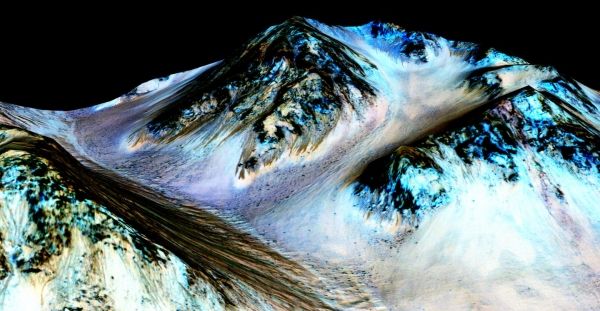A Southwest Research Institute scientist modeled the atmosphere of Mars to help determine that salty pockets of water present on the Red Planet are likely not habitable by life as we know it on Earth. A team that also included scientists from Universities Space Research Association (USRA) and the University of Arkansas helped allay planetary protection concerns about contaminating potential Martian ecosystems. These results were published this month in Nature Astronomy.
Due to Mars’ low temperatures and extremely dry conditions, a droplet of liquid water on its surface would instantly freeze, boil or evaporate, unless the droplet had dissolved salts in it. This brine would have a lower freezing temperature and would evaporate more slowly than pure liquid water. Salts are found across Mars, so brines could form there.
“Our team looked at specific regions on Mars — areas where liquid water temperature and accessibility limits could possibly allow known terrestrial organisms to replicate — to understand if they could be habitable,” said SwRI’s Dr. Alejandro Soto, a senior research scientist and co-author of the study. “We used Martian climate information from both atmospheric models and spacecraft measurements. We developed a model to predict where, when and for how long brines are stable on the surface and shallow subsurface of Mars.”
Mars’ hyper-arid conditions require lower temperatures to reach high relative humidities and tolerable water activities, which are measures of how easily the water content may be utilized for hydration. The maximum brine temperature expected is -55 F — at the boundary of the theoretical low temperature limit for life.
Read more at Southwest Research Institute
Image: An SwRI scientist modeled the climate of Mars to understand if hydrated salts or brines on the surface of the Red Planet could harbor life. The results suggest that hydrated salts and brines on Mars are not supportive of life. For example, if the dark streaks shown here are formed by the flow of briny water, then that briny water would be too cold to support life. (Credit: NASA/JPL-Caltech/University of Arizona)


